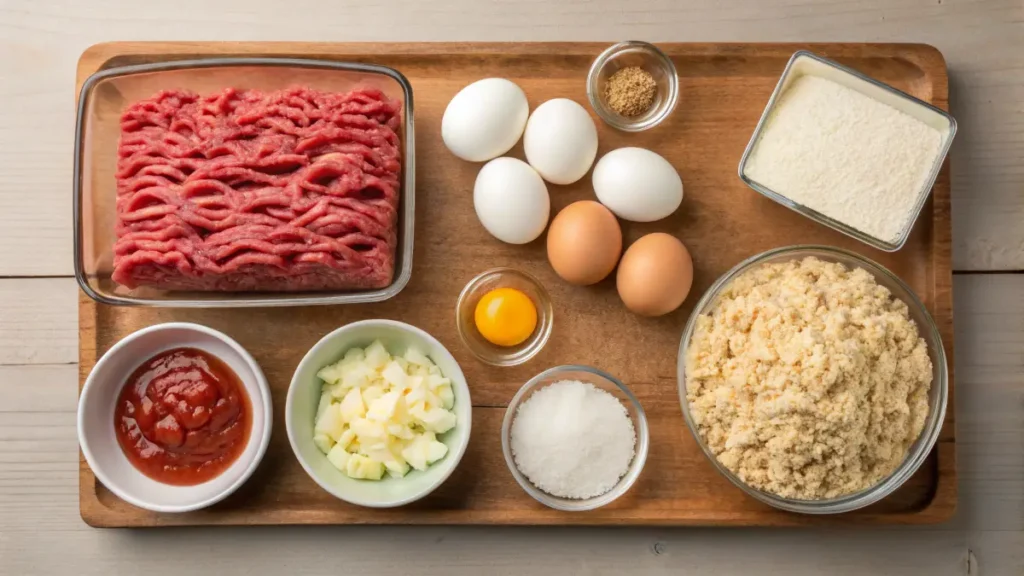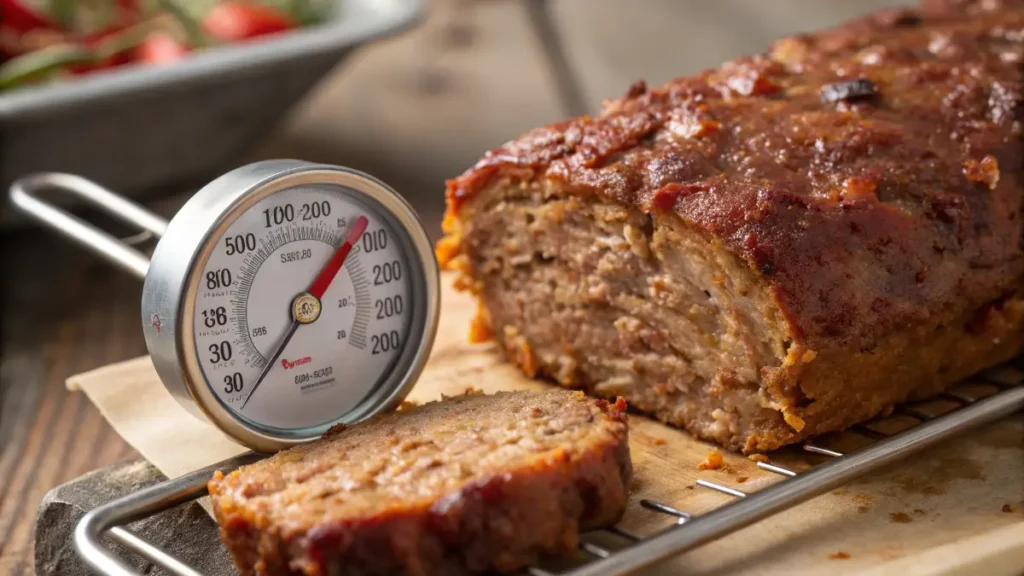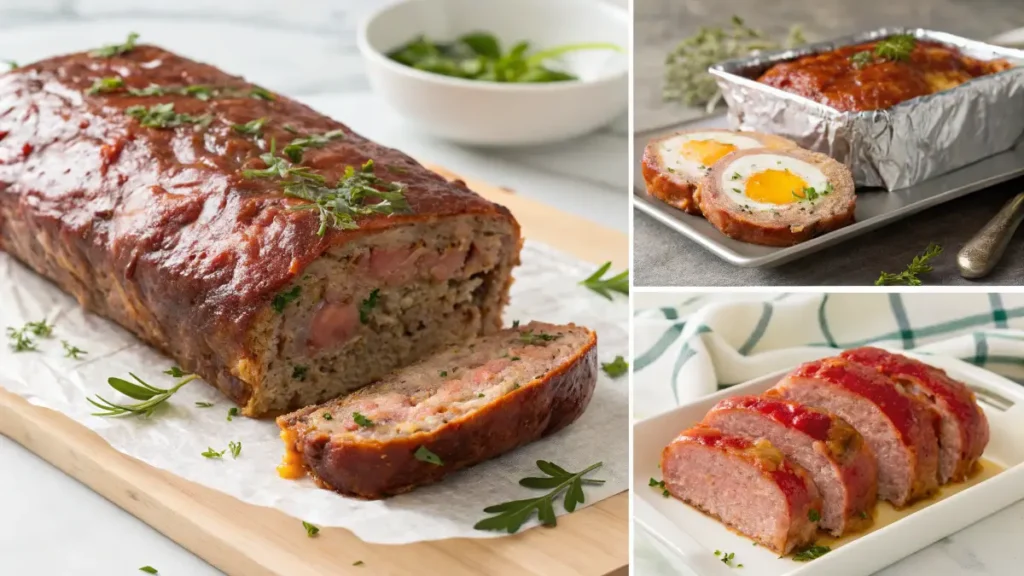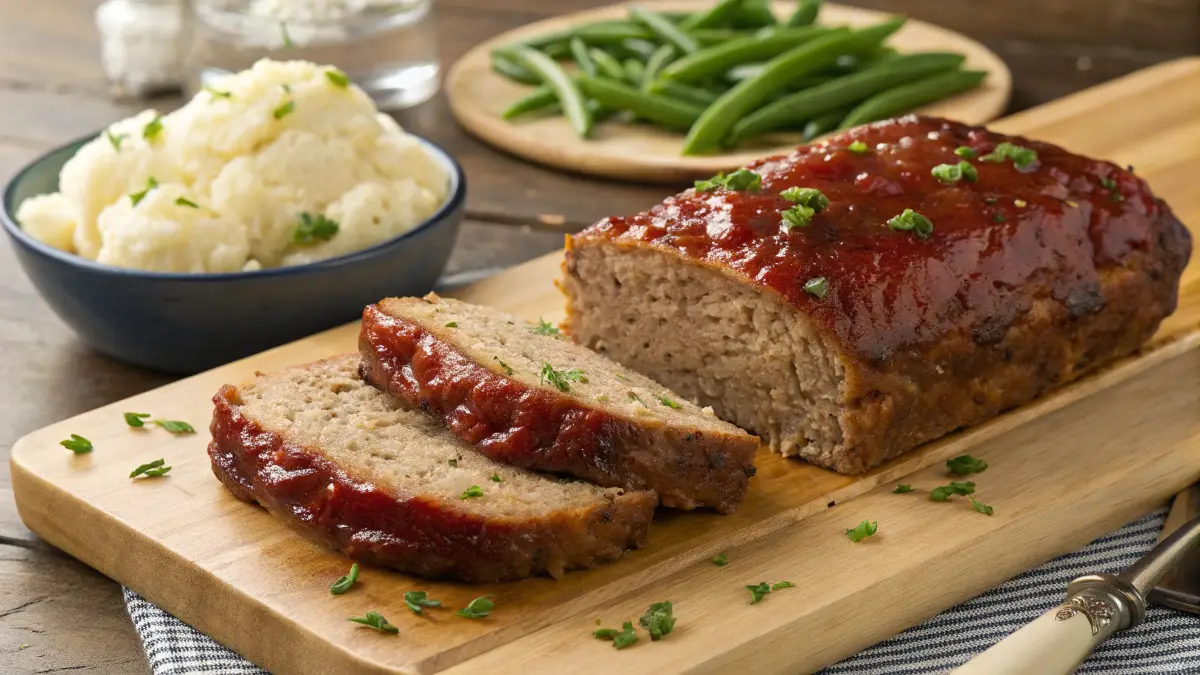Meatloaf has been a beloved comfort food for generations, yet achieving the perfect balance of moisture and flavor remains a challenge for many home cooks. What is the secret to juicy meatloaf? This article delves into the essential techniques, ingredients, and tricks to help you create a moist, tender, and flavorful meatloaf every single time. From choosing the right ingredients to mastering cooking methods, you’ll discover everything you need to know to make meatloaf that’s nothing short of mouthwatering. Let’s begin with the basics.
Understanding the Basics of Meatloaf
What is Meatloaf?
Meatloaf is a classic dish made from ground meat that’s mixed with binders, seasonings, and often vegetables, then baked to perfection. Traditionally, it’s served as a hearty main course, topped with a savory glaze or sauce. While it’s a staple in many households, its simplicity often leaves room for dryness or blandness if not prepared with care.
Why Moisture Matters in Meatloaf
The key to an unforgettable meatloaf lies in its texture and flavor. Dry meatloaf can feel like chewing cardboard, while overly moist meatloaf can turn mushy. The perfect meatloaf strikes a balance juicy enough to make you crave more but firm enough to hold its shape. This moisture isn’t just about taste; it’s also about mouthfeel. A moist meatloaf ensures every bite is tender and satisfying.
Key Ingredients for Juiciness

Choosing the Right Meat
When it comes to making a moist and tender meatloaf, the type of meat you use is crucial. Ground beef with a higher fat content, like an 80/20 blend (80% lean, 20% fat), is often the best choice. The fat adds moisture and richness to the loaf, preventing it from drying out. For a lighter option, ground pork or turkey can be used, but they tend to be leaner, so combining them with fattier meats is a smart move. If you’re wondering, what is the secret to juicy meatloaf, starting with the right meat blend is step one.
The Role of Binders (Eggs and Breadcrumbs)
Binders are the glue that holds your meatloaf together while also locking in moisture. Eggs are a classic choice they add structure and richness to the mixture. Meanwhile, breadcrumbs soak up liquid from milk, broth, or other wet ingredients, which they slowly release during baking. Using seasoned breadcrumbs can also bring an extra punch of flavor. If you want to avoid a crumbly or dry texture, don’t skimp on these essential ingredients!
Moisture-Enhancing Add-ins (Milk, Broth, Vegetables)
To keep your meatloaf from turning out dry, always include a source of moisture. Milk or broth is typically added to the mixture to hydrate the breadcrumbs and add richness. Finely chopped vegetables, like onions, carrots, or bell peppers, bring natural moisture and sweetness. These small steps ensure your meatloaf stays juicy and flavorful from the first bite to the last.
Mixing Techniques for a Perfect Texture
Avoiding Overmixing
One of the most common mistakes when making meatloaf is overmixing the ingredients. While it might be tempting to keep mixing until everything is perfectly combined, this can make the loaf tough and dense. Instead, mix the ingredients just until they’re evenly distributed. Use your hands gently this keeps the texture tender and prevents overworking the meat.
Balancing Fat and Lean Ratios
To achieve the ideal texture, it’s essential to balance the fat and lean ratios in your meat mixture. Too much fat, and your loaf could turn greasy; too little, and it might dry out. The golden rule? Aim for a meat blend with about 15–20% fat. If you’re experimenting with leaner meats like ground turkey or chicken, pair them with moist add-ins like sautéed vegetables or a splash of broth to keep things juicy.
If you’ve ever wondered what is the secret to juicy meatloaf, the answer lies not just in the ingredients but also in how you handle and combine them. Mixing with care ensures every slice is tender, flavorful, and just the right texture.
Cooking Tips for Juicy Meatloaf
Setting the Right Temperature
The cooking temperature plays a huge role in achieving a moist meatloaf. Baking at too high a temperature can dry out the loaf, leaving it tough and crumbly. Instead, aim for a gentle heat 350°F is the sweet spot. This ensures that the meat cooks evenly without losing its juices. For an extra tip, use an oven thermometer to confirm your oven is at the correct temperature throughout the process.
Baking in a Loaf Pan vs. Free-Form
When deciding between using a loaf pan or shaping the meatloaf free form on a baking sheet, both methods have their pros and cons. A loaf pan retains moisture better since it keeps the juices from spreading out. On the other hand, free-form baking allows excess grease to escape and gives the loaf a crusty exterior. If you’re after the ultimate balance, try lining a loaf pan with parchment paper for easy removal and a juicy yet firm texture.
Using a Meat Thermometer

The most reliable way to ensure your meatloaf is perfectly cooked (and not overdone) is by using a meat thermometer. Insert the thermometer into the center of the loaf it should read 160°F for beef or 165°F for turkey or chicken. This simple tool helps avoid guesswork and ensures your meatloaf stays moist without being undercooked.
Enhancing Juiciness with Sauces and Glazes
Traditional Tomato-Based Glaze
A rich, tangy glaze is often what takes meatloaf to the next level. A classic choice is a mix of ketchup, brown sugar, and a splash of vinegar, which creates the perfect balance of sweet and savory. Spread it over the top of the loaf during the last 15 minutes of baking for a glossy, flavorful finish.
Incorporating Savory Gravies
If tomato-based glazes aren’t your thing, try serving your meatloaf with a hearty gravy instead. Mushroom or onion gravy adds depth to the dish, enhancing the overall flavor and moisture. Pour it over each slice just before serving to make the meatloaf even more irresistible.
Frequently Asked Questions
If your meatloaf turns out dry, don’t worry there are ways to salvage it. One quick fix is to serve it with a generous amount of sauce or gravy to bring back moisture. Another option is to slice the meatloaf, layer it in a baking dish, and pour broth or tomato sauce over it before reheating. This helps the meat reabsorb some of the liquid, making it tender again.
The perfect ratio depends on the type of meat you’re using, but for beef-based meatloaf, an 80/20 blend works wonders. If you’re combining meats, like beef and pork, keep the fat-to-lean ratio around 15–20% for a moist and flavorful result. Remember, fat is key to retaining juiciness, but too much can make the loaf greasy.
Yes, meatloaf is perfect for meal prepping! You can mix and shape the loaf in advance, then store it in the fridge for up to 24 hours before baking. Alternatively, bake it ahead of time, cool it completely, and refrigerate it for up to three days. Reheat slices in the oven or microwave with a splash of broth or sauce to keep them moist.
The Secret Revealed – Combining Techniques
The Art of Layering Flavors
What is the secret to juicy meatloaf? It’s all about layering flavors and using complementary ingredients. Start by seasoning your meat generously, not just with salt and pepper but also with garlic, onion, and your favorite herbs. Add finely grated vegetables for moisture and sweetness, and mix everything gently to maintain the texture.
Using Foil to Lock in Moisture
One game-changing trick is to cover your meatloaf loosely with foil during the first half of the baking process. This traps steam and prevents the loaf from drying out. For the last 15–20 minutes, remove the foil to let the glaze caramelize and the edges crisp up. This combination ensures every bite is juicy, tender, and full of flavor.
Common Mistakes to Avoid
Skipping the Resting Period
One of the most common mistakes when making meatloaf is slicing into it right out of the oven. While it’s tempting to dig in immediately, skipping the resting period causes all the juices to escape, leaving the meatloaf dry. Allow your loaf to rest for at least 10–15 minutes after baking. This step lets the juices redistribute, ensuring every slice stays moist and flavorful.
Overbaking
Overcooking meatloaf is a surefire way to end up with a dry, tough dish. To avoid this, always use a meat thermometer and check for doneness as the loaf nears the recommended cooking time. Remember, the target temperature is 160°F for beef or 165°F for turkey and chicken. Once it reaches the right temperature, pull it out of the oven and let it rest it will continue cooking slightly as it cools.
And there you have it a complete guide to what is the secret to juicy meatloaf. By combining the right ingredients, mastering your mixing techniques, and following the best cooking practices, you’ll create a meatloaf that’s moist, tender, and bursting with flavor every time. For more inspiration and recipes, don’t forget to explore this guide on carnivore dinner ideas in everytastes.
Meat-to-Fat Ratio and Cooking Time
| Meat Type | Fat Ratio | Cooking Time (Per Pound) | Recommended Internal Temperature |
|---|---|---|---|
| Ground Beef (80/20) | 80% lean | 30–40 minutes | 160°F |
| Ground Turkey | 85% lean | 35–45 minutes | 165°F |
| Ground Pork | 75% lean | 40–50 minutes | 160°F |
| Ground Chicken | 90% lean | 35–50 minutes | 165°F |
| Meat Mixture (Beef/Pork/Veal) | 80% lean | 30–45 minutes | 160°F |
This table provides a handy reference to ensure your meatloaf is both juicy and properly cooked.
The Role of Seasonings and Aromatics
Spices and Herbs for the Perfect Meatloaf
A well-seasoned meatloaf can make all the difference between a bland dinner and a flavor-packed meal. Traditional spices like garlic powder, onion powder, paprika, and black pepper create a solid flavor base. For an extra kick, add a pinch of cayenne or red pepper flakes. Fresh herbs like parsley, thyme, or rosemary can elevate the taste, while dried herbs work just as well if fresh options aren’t available. Don’t forget salt it enhances every other flavor in your meatloaf.
Using Fresh vs. Dried Ingredients
When choosing between fresh and dried ingredients, it’s all about balance. Fresh onions and garlic bring moisture and a sharp flavor, while dried onions or garlic powder offer a more subtle, evenly distributed taste. Fresh herbs add brightness and visual appeal, but dried herbs are more concentrated and long-lasting. Experimenting with both types can help you tailor the seasoning to your personal preference.
Variations of Meatloaf
Classic Meatloaf Recipes
The traditional meatloaf recipe typically combines ground beef, breadcrumbs, eggs, milk, and a tomato-based glaze. However, variations like adding grated cheese or Worcestershire sauce can add depth and richness. Some recipes even include oatmeal or crushed crackers as a breadcrumb alternative, giving the loaf a heartier texture.
International Takes on Meatloaf

Meatloaf isn’t just an American classic; many countries have their own spin on this beloved dish. In Germany, Falscher Hase includes boiled eggs placed in the center of the loaf. Italy’s Polpettone often features Parmesan cheese and prosciutto. In the Philippines, meatloaf, known as Embutido, is wrapped in foil and steamed instead of baked. Exploring these variations can be a fun way to add new flavors and textures to your meatloaf repertoire.
Conclusion
Creating the perfect meatloaf is no longer a mystery. What is the secret to juicy meatloaf? It’s a combination of using the right ingredients, mastering preparation techniques, and following careful cooking practices. Choosing a good meat-to-fat ratio, adding moisture-enhancing ingredients, and avoiding common mistakes like overmixing or overbaking are all key steps to ensure success.
Don’t forget the finishing touches whether it’s a classic tomato glaze or a savory gravy, the right topping adds a burst of flavor that makes every slice irresistible. By incorporating fresh seasonings, exploring international variations, and experimenting with techniques like foil baking, you can take your meatloaf from simple to spectacular.
Remember, cooking is as much about experimenting as it is about following recipes. With the tips and tricks in this guide, you’re well on your way to making a meatloaf that’s not just juicy, but also a memorable centerpiece for any meal.
For more comforting and delicious recipes, check out our collection of hearty dinner ideas. Happy cooking!

